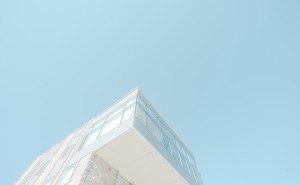The usefulness of thermally-broken window profiles has been abundantly demonstrated for temperate and cold climates. But what about extremely hot areas? Can the right window profiles increase energy efficiency there too? Multiple studies show that they can. The savings are even surprisingly high for some regions.

Thermal barrier achieves marked reduction in cooling costs
Window profiles with thermal barriers were originally developed for colder climes. They can help reduce heating costs significantly. In warmer areas, environmentally friendly cooling is much more important. Depending on the type of installation, cooling a building down can be up to three times as costly as heating it up. In Mumbai, air conditioning is responsible for 40% of energy consumption. In the UK, not quite 20% of electricity usage is due to air conditioners and refrigerators. How can we avoid the need for air conditioning that’s permanently set at full blast?
Through the years, many different heat reduction strategies have been proposed and tested: correct orientation of buildings and windows, less glazing, awnings, planting trees to create shade, etc. One recurring objection to these measures is the loss of light. After all, more indoor lighting raises energy consumption too. Researchers have managed to find an alternative, however: optimising the choice of glazing and window profiles.
In, for example, Phoenix, Arizona (US) and large parts of Australia and Brazil temperatures can reach 30° C or higher for months on end. Scientists in these regions have explored ways to reduce energy costs for homes and offices. Primarily due to a sense of environmental responsibility, of course, but also from brute necessity. For example, early this century regional authorities in Sao Paulo (Brazil) decreed that both private individuals and organizations needed to reduce their energy consumption by at least 20%.
In their quest for the most energy-efficient, ecologically friendly and therefore also most affordable solution, the researchers tested the above-mentioned heat reduction strategies in all possible combinations. A recurring conclusion to their research was the efficacy of a combination of low emissivity glass and thermally broken window profiles.
Savings up to 70%
Savings in cooling expenses can vary greatly, partly due to a region’s characteristic climate. In the Australian cities of Canberra, Melbourne and Hobart, savings in air conditioning costs of 5 to 6 % were observed. The net savings were higher, but the researchers included installation costs for the new glazing.
In Sao Paulo Philipp Müller, Werner Jager and Harald Schulz focused more on possible savings during the hottest time of day. They studied the effects of the entire range of heat reduction strategies, including the use of improved glazing and thermally broken window profiles. They concluded that it was possible to save up to 29% during the hottest time of day. A supplementary test at an old office building even resulted in almost 70% less cooling expenses with all conditions optimised. Finally, Müller and his colleagues extrapolated the most significant factor in their tests: the U value of the aluminium window profiles.
In Phoenix, Arizona (US) average maximum temperatures exceed 30° C from May to October. The EWC (Efficient Windows Collaborative, a collaboration between manufacturers, researchers and the government) determined that no matter which heat reduction strategies were combined, the ones incorporating thermal breaks in the profiles were always the most effective. Savings in air conditioning usage sometimes reached as high as 60%.
- Peter De Roovere



Leave a comment